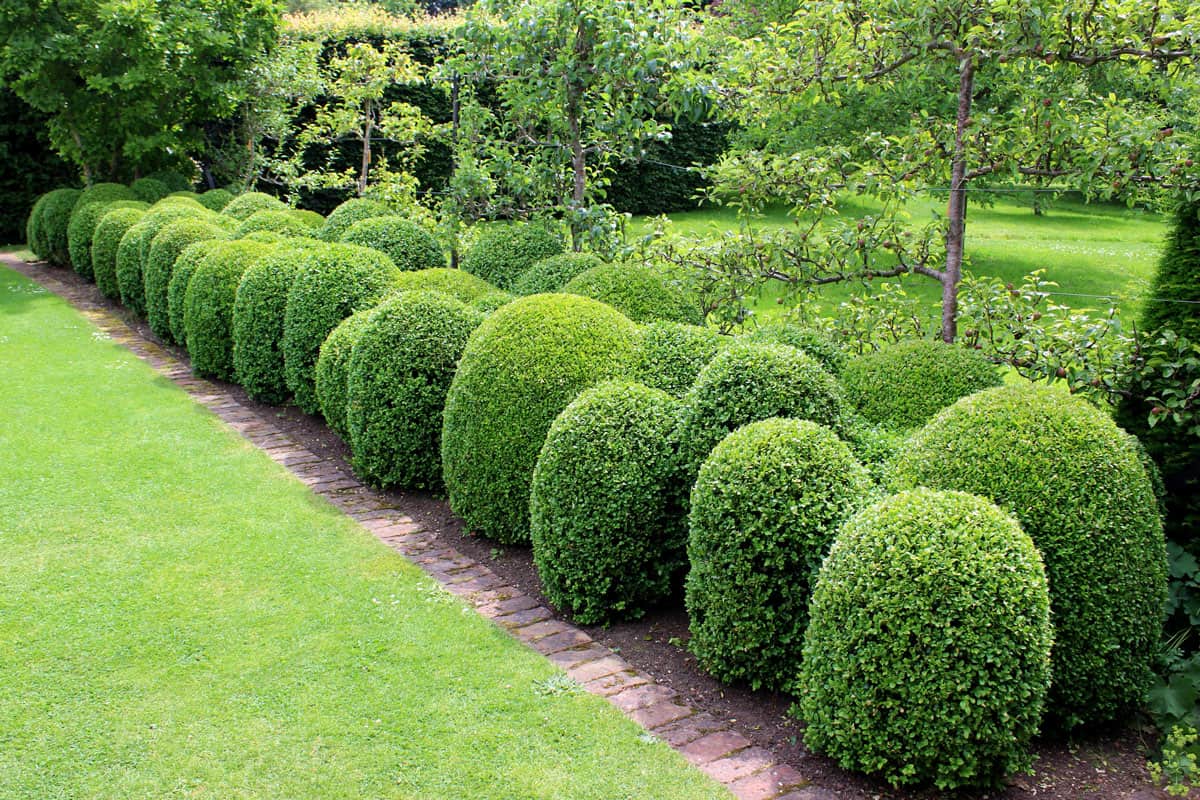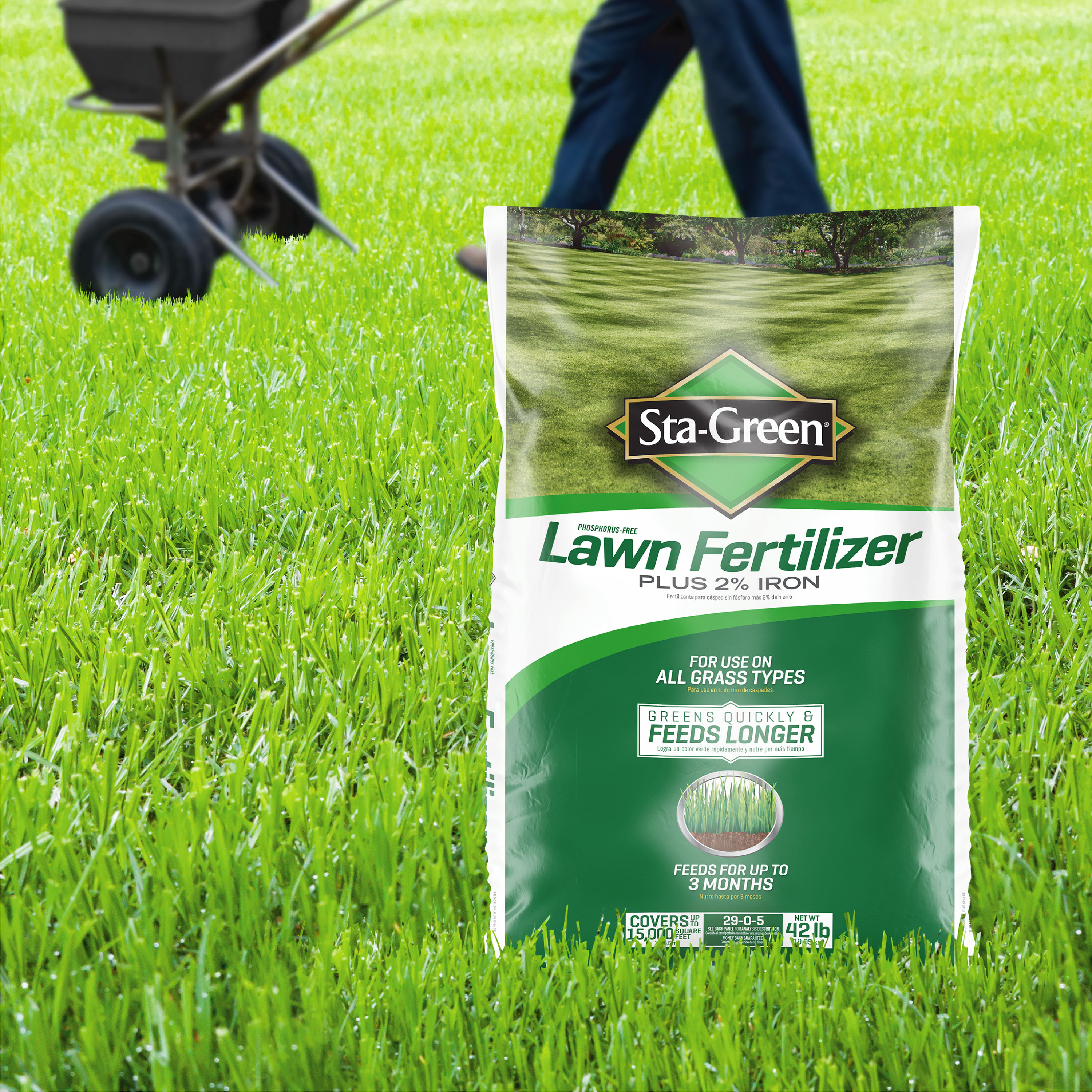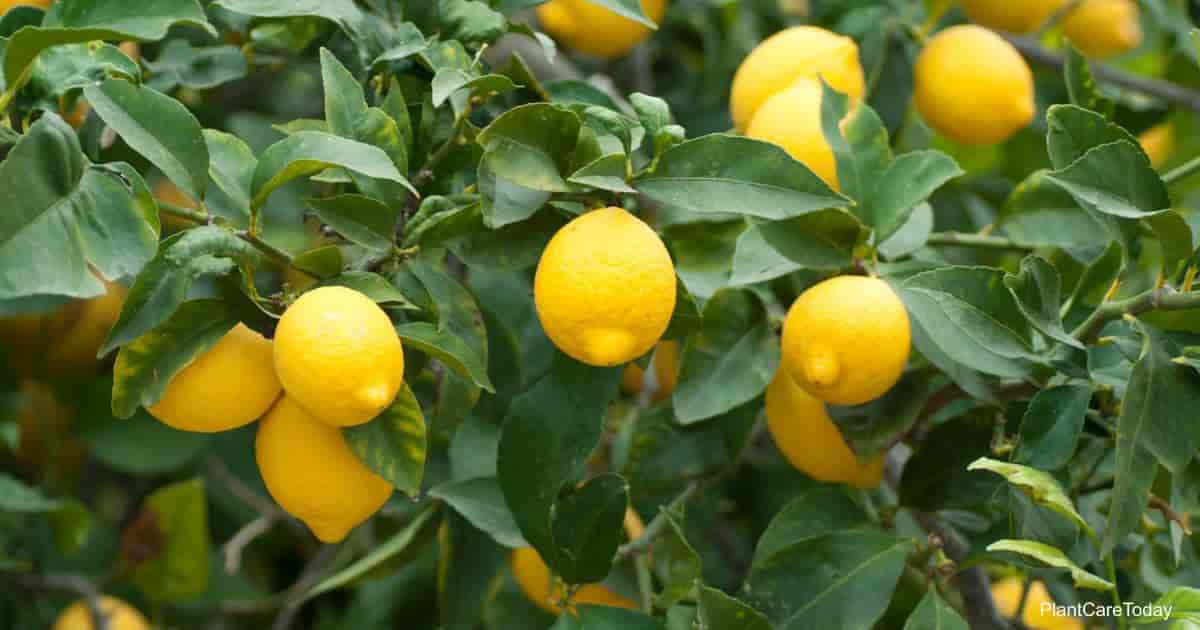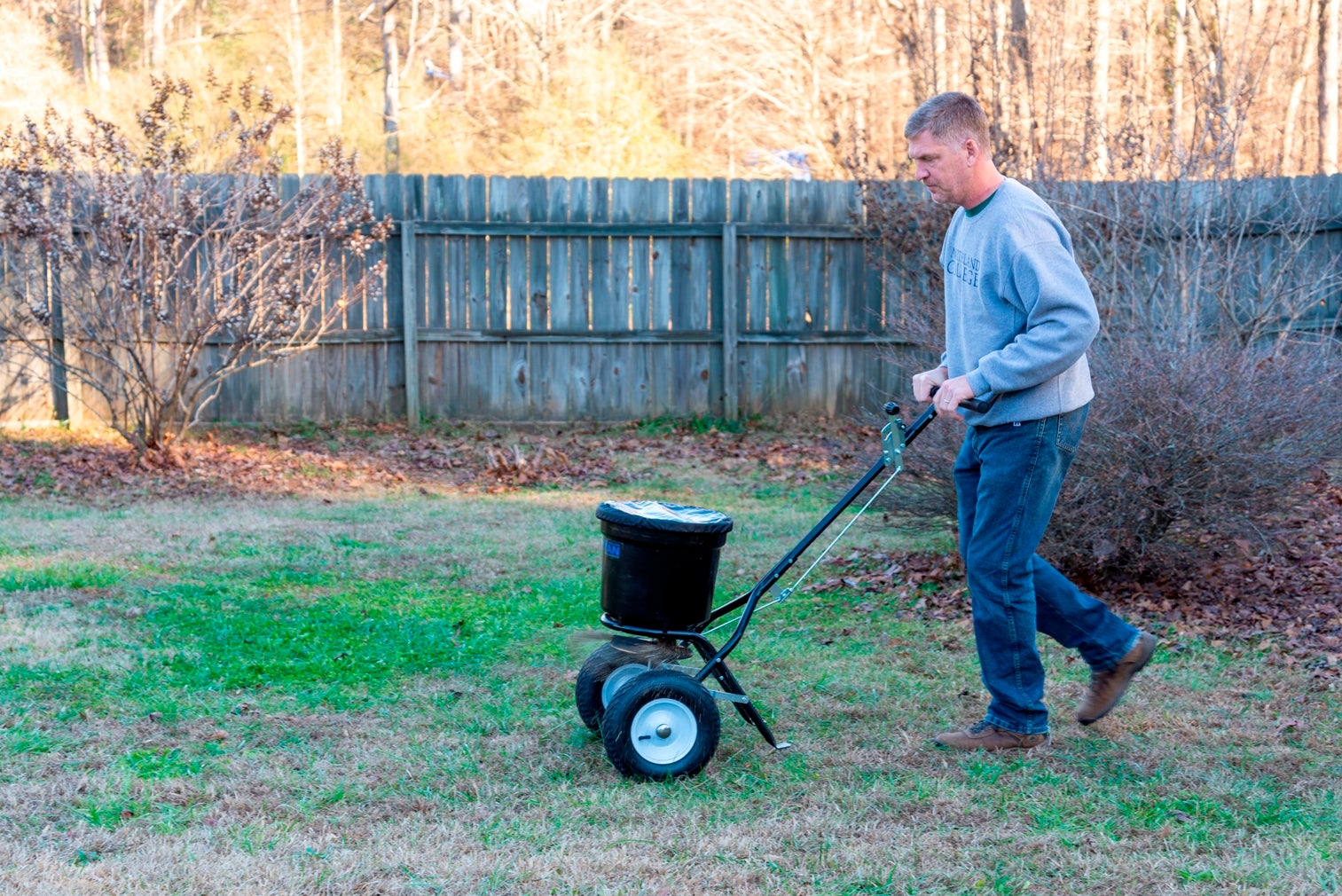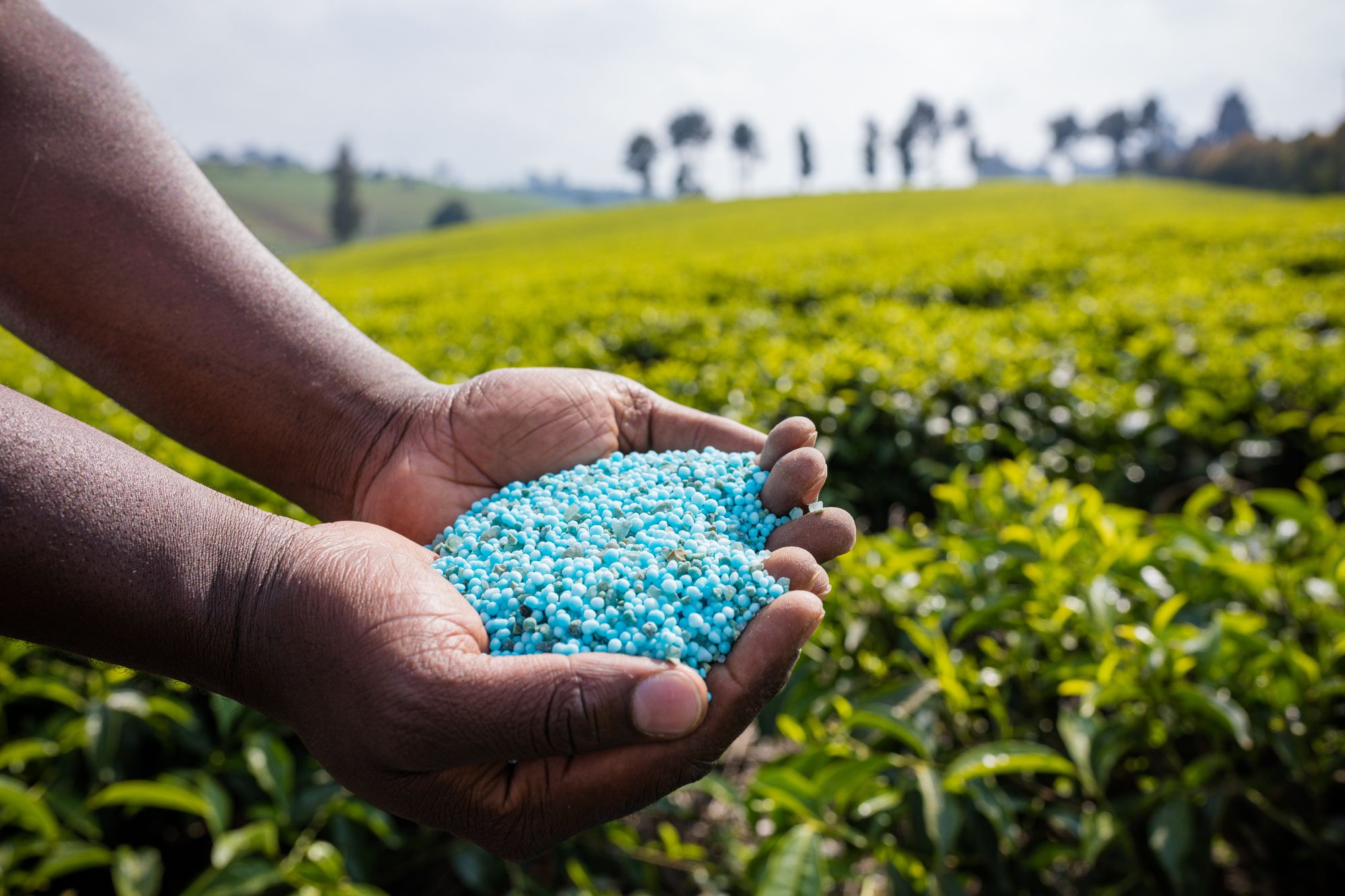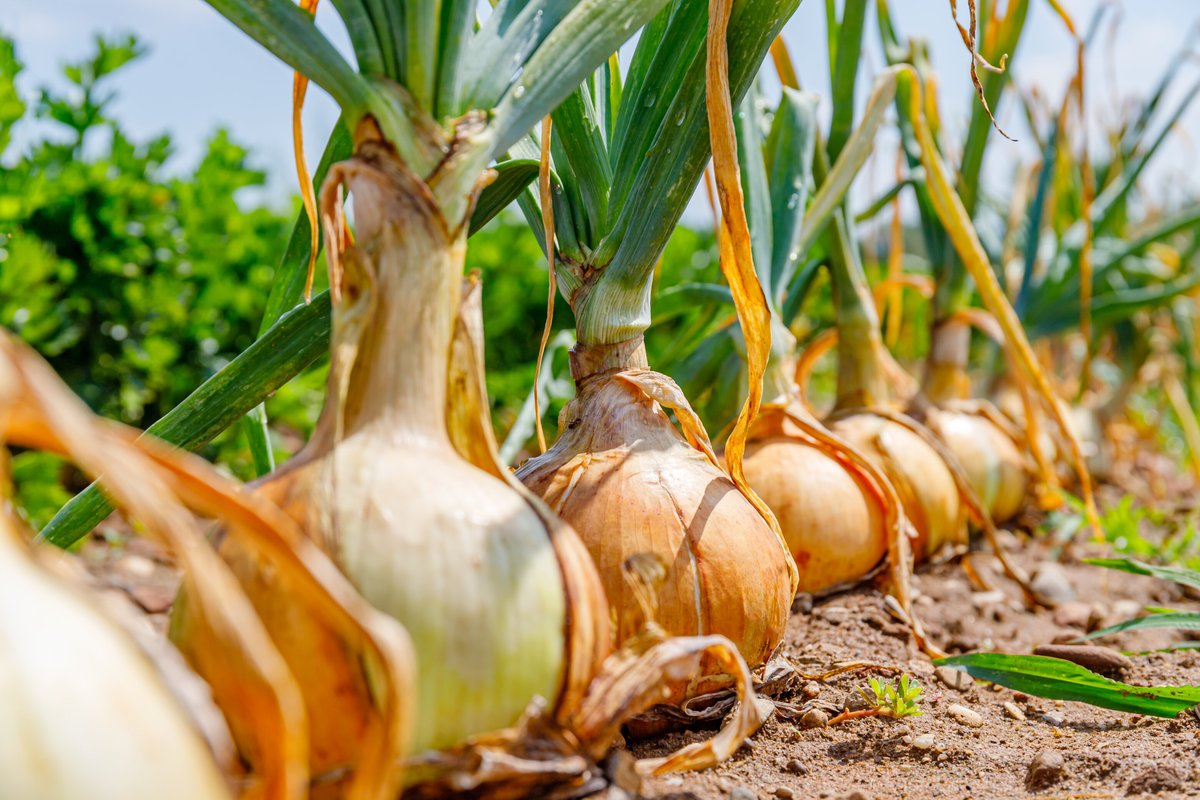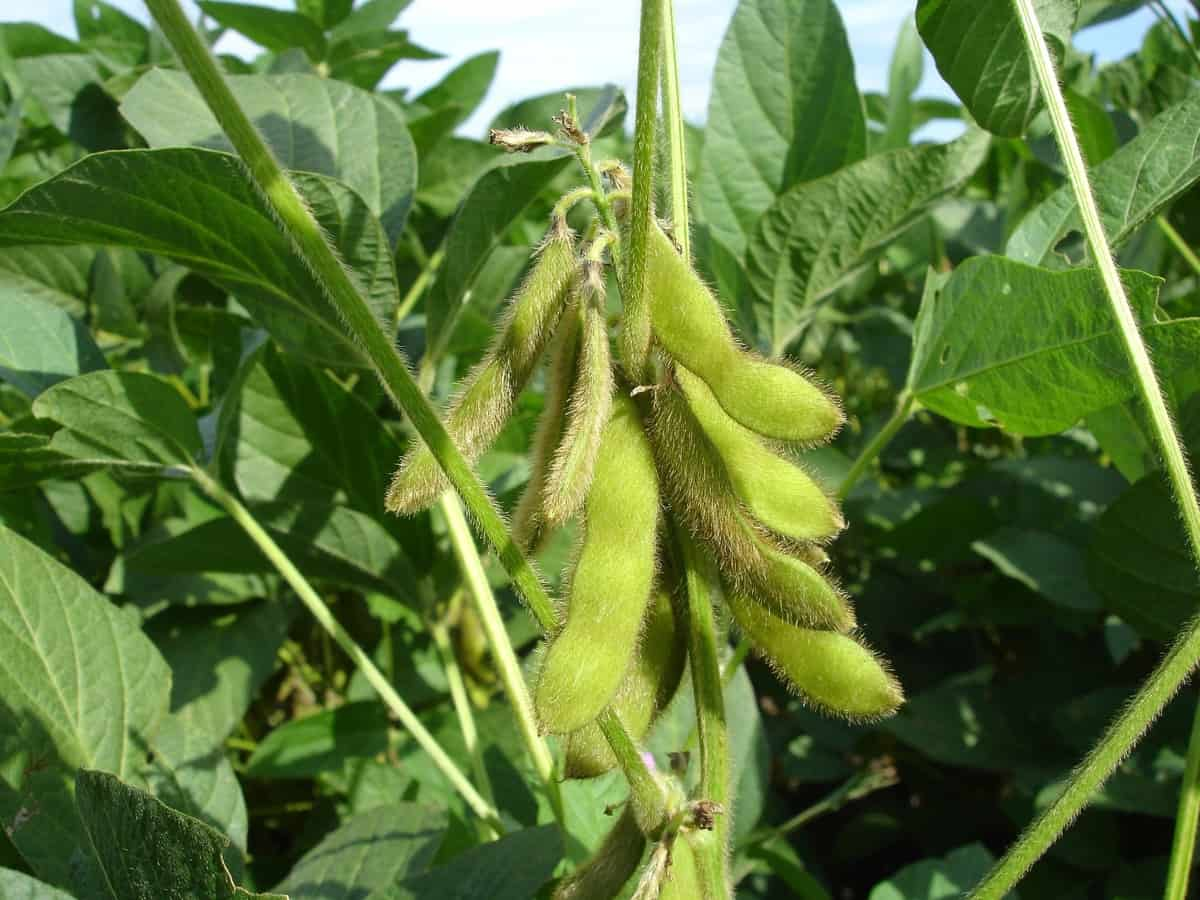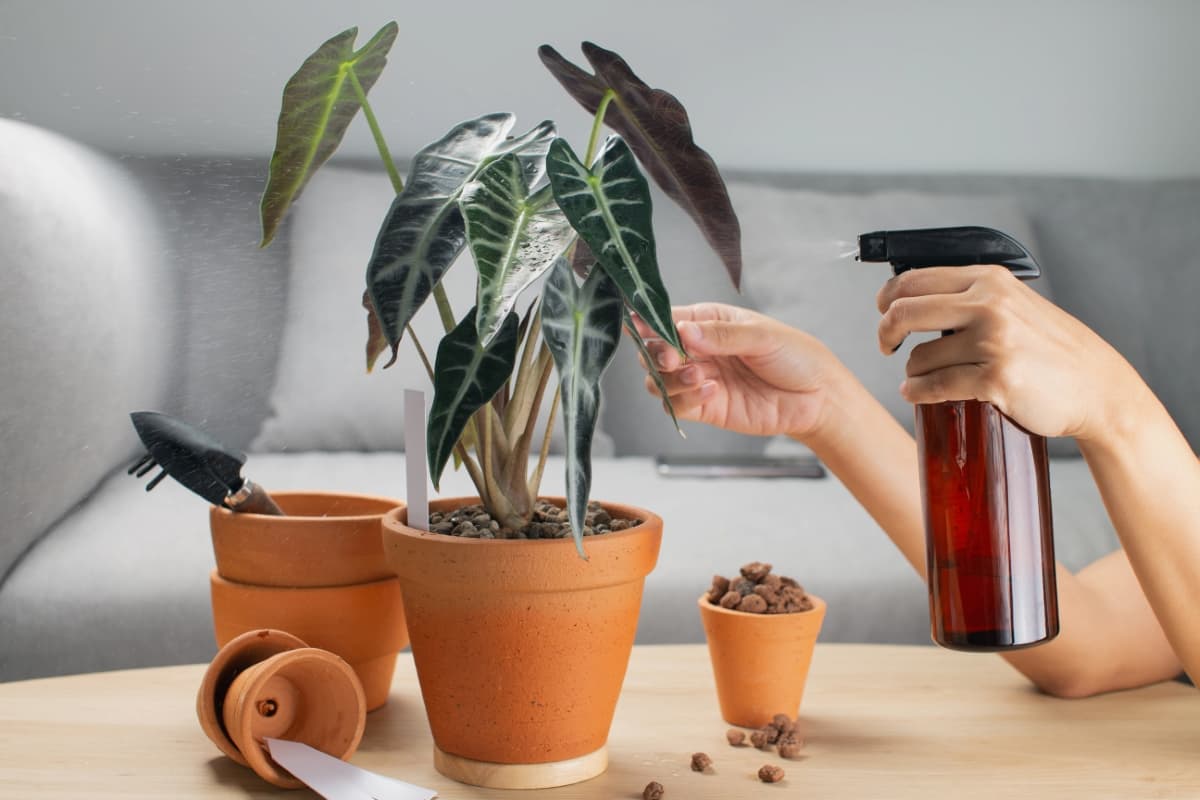Home>Types of Gardening>Ornamental Gardening>Best Fertilizer For Boxwood


Ornamental Gardening
Best Fertilizer For Boxwood
Modified: February 9, 2024
Discover the best fertilizer for boxwoods in our comprehensive guide for ornamental gardening. Grow healthy and vibrant boxwood plants with our expert recommendations.
(Many of the links in this article redirect to a specific reviewed product. Your purchase of these products through affiliate links helps to generate commission for Chicagolandgardening.com, at no extra cost. Learn more)
Table of Contents
Introduction
Welcome to the world of ornamental gardening! Whether you’re a seasoned gardener or just starting out, one thing is certain – the beauty of boxwoods cannot be ignored. These evergreen shrubs, with their lush foliage and elegant shape, add a touch of sophistication to any garden or landscape.
However, to ensure that your boxwoods thrive and maintain their vibrant appearance, proper fertilization is essential. Fertilizing boxwoods provides them with the necessary nutrients to support healthy growth, lush foliage, and strong root development. In this article, we will explore the various fertilizers suitable for boxwoods, including organic and inorganic options, as well as homemade alternatives.
Before diving into the world of fertilizers, it’s important to understand the unique characteristics of boxwoods. Boxwoods belong to the Buxaceae family and are renowned for their dense, compact growth habit. They are revered for their ability to be pruned into various shapes, from classic rounded forms to intricate topiaries. These versatile shrubs are highly valued for their aesthetic appeal and ability to provide structure and definition to a garden.
In addition to their beauty, boxwoods are known to be relatively low-maintenance plants. However, to keep them looking their best, they require regular fertilization to replenish nutrients that may be depleted from the soil over time.
When it comes to choosing the right fertilizer for boxwoods, there are several factors to consider. These factors include the specific nutritional needs of boxwoods, the soil composition in your garden, and your personal preference for organic or inorganic fertilizers.
By understanding the different options available and following best practices for fertilizing boxwoods, you can ensure that your shrubs not only survive but thrive, becoming a source of pride and admiration in your garden.
Understanding Boxwoods
Before delving into the world of fertilizers, it’s important to have a basic understanding of boxwoods. These evergreen shrubs belong to the Buxaceae family and are known for their dense, compact growth habit and glossy green leaves. Boxwoods come in various cultivars, each with its own unique characteristics and growth patterns.
One of the key features of boxwoods is their versatility in terms of pruning and shaping. They can be easily trained into different forms, ranging from classic rounded shapes to intricate geometric designs. This makes them a popular choice for gardeners who enjoy creating formal hedges, topiaries, or even bonsai-like specimens.
Boxwoods are typically slow-growing plants, which is advantageous for those looking to maintain a specific size or shape. However, this slow growth rate also means that they have a relatively low nutrient requirement compared to other plants.
These shrubs thrive in well-draining soil with a slightly acidic to neutral pH level. They prefer to be planted in an area that receives partial to full sunlight, although certain cultivars can tolerate some shade as well. Boxwoods are known to be resistant to deer and rabbit browsing, making them an excellent choice for landscapes where wildlife is present.
While boxwoods are generally hardy plants, they can be susceptible to certain diseases and pests. Boxwood blight, which causes severe defoliation, is a common issue that gardeners need to be mindful of. Additionally, pests such as boxwood leafminers and mites can cause damage to the leaves.
Regular maintenance, including proper fertilization, can help strengthen boxwoods’ resistance to diseases and pests. Fertilizing boxwoods provides the necessary nutrients for healthy growth and helps fortify their natural defense mechanisms.
Overall, boxwoods are a beloved choice for ornamental gardening due to their aesthetic appeal, versatility, and low-maintenance requirements. Understanding the unique characteristics of boxwoods will enable you to provide the best care for these stunning shrubs.
Factors to Consider
When it comes to fertilizing boxwoods, there are several factors that need to be taken into consideration to ensure the best results. By understanding these factors, you can make an informed decision about the type and timing of fertilizer application for your boxwoods.
1. Nutritional Needs: Boxwoods have specific nutritional requirements that should be addressed through fertilization. They typically require a balanced fertilizer with a ratio of nitrogen (N), phosphorus (P), and potassium (K) such as a 10-10-10 or 14-14-14. Nitrogen promotes leaf and stem growth, phosphorus supports root development, and potassium aids in overall plant health and disease resistance.
2. Soil Composition: Understanding the composition of your garden soil is crucial when choosing a fertilizer for boxwoods. Conducting a soil test can help determine the pH level and nutrient deficiencies or excesses in the soil. Boxwoods prefer well-draining soil with a slightly acidic to neutral pH of around 6.0 to 7.0. Based on the soil test results, you can adjust the pH and provide the necessary nutrients through fertilization.
3. Organic vs. Inorganic Fertilizers: The choice between organic and inorganic fertilizers depends on personal preference, the overall health of the soil, and environmental considerations. Organic fertilizers, such as compost, well-rotted manure, or fish emulsion, provide slow-release nutrients and improve soil structure over time. Inorganic or synthetic fertilizers, on the other hand, offer immediate nutrient availability but may require more frequent application.
4. Seasonal Timing: Timing is crucial when fertilizing boxwoods. It’s generally best to apply fertilizers in early spring or fall when the shrubs are actively growing and can absorb nutrients effectively. Avoid fertilizing during periods of extreme heat or drought to prevent burning the plants. Also, consider the specific cultivar and its growth habits, as some boxwoods may benefit from additional fertilization during the growing season.
5. Environmental Impact: Consider the impact of fertilizers on the environment. Overuse or improper application of fertilizers can lead to runoff and water pollution. Follow the recommended application rates and practices to minimize the environmental impact.
By taking these factors into account, you can make informed decisions about the type of fertilizer, timing, and application methods for your boxwoods. This will ensure that your plants receive the necessary nutrients for optimal growth, health, and beauty.
Organic Fertilizers for Boxwoods
Organic fertilizers are a natural and sustainable option for feeding your boxwoods. They provide slow-release nutrients and improve soil health over time. Here are some popular organic fertilizer options for boxwoods:
1. Compost: Compost is a rich source of organic matter and nutrients. It improves soil structure, retains moisture, and enhances microbial activity. Apply a layer of compost around the base of the boxwoods in early spring or fall, and lightly work it into the soil.
2. Well-Rotted Manure: Well-rotted manure from herbivorous animals, such as horses, cows, or chickens, is an excellent source of organic nutrients. Apply a thin layer of well-rotted manure around the drip line of the boxwoods, taking care to avoid direct contact with the stems.
3. Fish Emulsion: Fish emulsion is a liquid organic fertilizer made from fermented fish remains. It is a rich source of nitrogen, phosphorus, and trace minerals. Dilute fish emulsion according to the manufacturer’s instructions and apply it as a foliar spray or directly to the soil around the boxwoods.
4. Bone Meal: Bone meal is made from ground animal bones and is a slow-release source of phosphorus and calcium. It promotes root development and strengthens boxwoods. Sprinkle bone meal around the base of the plants and lightly work it into the soil in early spring.
5. Worm Castings: Worm castings, also known as vermicompost, are the waste produced by earthworms. They are a nutrient-rich and microbe-friendly organic fertilizer that improves soil structure and nutrient availability. Mix worm castings into the top layer of soil around the boxwoods.
When using organic fertilizers for boxwoods, it’s important to follow the recommended application rates provided by the manufacturer. These fertilizers provide gradual nutrient release and may require less frequent application compared to inorganic options. Always water the plants after applying organic fertilizers to help activate the nutrients and prevent burning.
Organic fertilizers not only nourish your boxwoods but also improve the overall health of the soil and promote beneficial microbial activity. By incorporating organic fertilizers into your boxwood care routine, you can create a sustainable and eco-friendly environment for your plants.
Inorganic Fertilizers for Boxwoods
Inorganic fertilizers, also known as synthetic or chemical fertilizers, provide immediate nutrient availability to boxwoods. These fertilizers are formulated with specific ratios of nitrogen (N), phosphorus (P), and potassium (K), as well as other essential micronutrients. Here are some common inorganic fertilizer options for boxwoods:
1. Balanced NPK Fertilizers: Balanced fertilizers with equal or similar amounts of nitrogen, phosphorus, and potassium, such as a 10-10-10 or 14-14-14, provide a well-rounded nutrient supply for boxwoods. These fertilizers are readily available and easy to use.
2. Slow-Release Fertilizers: Slow-release fertilizers are granular or pelletized formulas that release nutrients gradually over time. This type of fertilizer provides a steady supply of nutrients, reducing the risk of nutrient leaching or burning the plants. Follow the manufacturer’s instructions for application rates and timing.
3. Fertilizer Spikes or Stakes: Fertilizer spikes or stakes consist of pre-measured nutrient-rich sticks that are inserted into the soil around the drip line of the boxwoods. The nutrients are released gradually as the spikes dissolve, providing an even distribution of fertilization over an extended period.
4. Liquid Fertilizers: Liquid fertilizers are soluble formulations that can be applied directly to the soil or as a foliar spray. They are quickly absorbed by the plants, providing immediate nutrition. Dilute liquid fertilizers according to the manufacturer’s instructions and apply them as directed.
5. Granular Fertilizers: Granular fertilizers are dry, pelletized formulations that can be spread evenly around the base of the boxwoods. These fertilizers are easy to apply and provide a slow-release of nutrients as they dissolve in moisture.
When using inorganic fertilizers, it’s important to follow the label instructions carefully to prevent over-fertilization, which can harm the plants. Always water the boxwoods after applying inorganic fertilizers to help activate the nutrients and prevent any potential burning.
Inorganic fertilizers offer convenience and precise nutrient delivery, allowing for targeted feeding of boxwoods. However, it’s important to note that repeated use of inorganic fertilizers may have long-term effects on soil health and microbial activity. Consider alternating or combining inorganic fertilizers with organic options to maintain a balanced and sustainable approach to boxwood fertilization.
Homemade Fertilizer Options
If you prefer a DIY approach to fertilizing your boxwoods or want to reduce your reliance on commercial products, there are several homemade fertilizer options that you can consider. These homemade alternatives are often cost-effective and utilize natural ingredients found in and around your home. Here are a few homemade fertilizer options for your boxwoods:
1. Epsom Salt: Epsom salt, which is actually magnesium sulfate, is a readily available and affordable option that can provide a boost of magnesium to your boxwoods. Dissolve 1 tablespoon of Epsom salt in 1 gallon of water and apply it as a foliar spray or directly to the soil around the base of the plants.
2. Coffee Grounds: Coffee grounds are rich in nitrogen and can serve as an excellent homemade fertilizer. Spread used coffee grounds around the base of the boxwoods, ensuring to mix them into the soil. Coffee grounds also act as a natural mulch, helping to retain moisture and suppress weed growth.
3. Banana Peels: Banana peels are a valuable source of potassium, an essential nutrient for strong root development and overall plant health. Chop or blend banana peels and bury them around the base of the boxwoods. Over time, the banana peels will decompose, releasing nutrients into the soil.
4. Seaweed Fertilizer: If you have access to a nearby ocean or coastal area, collect seaweed and make your own seaweed fertilizer. Rinse the seaweed to remove excess salt and blend it with water. Use the mixture as a foliar spray or dilute it and apply it directly to the soil around the boxwoods. Seaweed is rich in trace minerals, which can benefit the overall health of the plants.
5. Homemade Compost Tea: Compost tea is a nutrient-rich liquid fertilizer that can be made by steeping compost in water. Fill a container with water and add a handful of compost. Let it sit for a few days, stirring occasionally. Strain the liquid and apply it as a soil drench or foliar spray. This homemade fertilizer provides a balanced mix of nutrients and beneficial microbes.
When using homemade fertilizers, it’s important to apply them sparingly and avoid excessive use. The quantities and frequencies of application can vary, so it’s best to start with small amounts and observe the plant’s response. Remember to water the boxwoods thoroughly after applying homemade fertilizers to help activate the nutrients.
Homemade fertilizers offer a sustainable and eco-friendly way to nourish your boxwoods while utilizing household items or natural materials. Experiment with these homemade options and tailor them to suit the specific needs of your boxwoods and your gardening practices.
Best Practices for Fertilizing Boxwoods
To ensure successful fertilization and optimal growth of your boxwoods, it’s important to follow some best practices. By incorporating these guidelines into your boxwood care routine, you can maximize the effectiveness of fertilizers and promote the health and beauty of your plants.
1. Soil Moisture: Before applying any fertilizers, ensure that the soil is adequately moist. Water the boxwoods thoroughly a day or two before fertilization to help prevent burning and ensure optimal nutrient absorption.
2. Follow Instructions: Whether using organic, inorganic, or homemade fertilizers, always read and follow the instructions provided by the manufacturer. Over-fertilizing can damage the plants, while under-fertilizing may not provide the necessary nutrients for healthy growth.
3. Apply Evenly: Spread the fertilizer evenly around the base of the boxwoods, avoiding direct contact with the stems. This ensures that the nutrients are distributed evenly and prevents potential burns or excessive exposure to concentrated fertilizers.
4. Timing: Fertilize boxwoods in early spring or fall when they are actively growing. Avoid fertilizing during extreme weather conditions, such as high heat or drought, as this can stress the plants. Adjust the timing based on the specific needs of the boxwood cultivars in your garden.
5. Mulch: Apply a layer of organic mulch, such as wood chips or shredded bark, around the base of the boxwoods. Mulch helps retain soil moisture, suppress weed growth, and gradually release nutrients into the soil. Avoid piling the mulch against the stems to prevent disease and pests.
6. Monitor Growth: Regularly monitor the growth and appearance of your boxwoods. If you notice signs of nutrient deficiencies, such as yellowing leaves or stunted growth, adjust the fertilization regimen accordingly. Remember that boxwoods have relatively low nutrient requirements compared to other plants, so excessive fertilization can be counterproductive.
7. Water After Application: After applying fertilizers, thoroughly water the boxwoods to activate the nutrients and prevent potential burning. Watering also helps distribute the fertilizers into the soil, ensuring even nutrient uptake by the plants.
8. Maintain Soil Health: In addition to fertilization, pay attention to the overall health of the soil. Regularly amend the soil with organic matter, such as compost or well-rotted manure, to improve soil structure and enhance nutrient availability.
9. Pest and Disease Management: Healthy boxwoods are more resistant to pests and diseases. Maintain proper fertilization, ensure adequate sunlight and airflow, and promptly address any pest or disease issues to prevent them from impacting the plants.
By following these best practices, you can promote the optimal growth and vigor of your boxwoods. Remember that fertilization is just one aspect of boxwood care, and a well-rounded approach that includes proper pruning, watering, and maintenance will lead to thriving and beautiful shrubs.
Conclusion
Fertilizing boxwoods is a crucial aspect of maintaining their health, vigor, and beauty. Whether you choose organic, inorganic, or homemade fertilizers, it’s important to consider the specific nutritional needs of boxwoods, the composition of your soil, and environmental factors. By understanding these factors and following best practices, you can ensure successful fertilization and promote optimal growth.
Boxwoods, with their compact growth habit and versatile pruning capabilities, bring elegance and structure to any garden or landscape. These evergreen shrubs are relatively low-maintenance but still benefit from regular fertilization to replenish nutrients and support their growth.
Organic fertilizers, such as compost, well-rotted manure, fish emulsion, or homemade options like coffee grounds or banana peels, offer sustainable and eco-friendly choices. They enrich the soil, improve microbial activity, and provide slow-release nutrients. Inorganic fertilizers, such as balanced NPK formulations or slow-release granules, offer precise nutrient delivery and immediate availability.
When fertilizing boxwoods, it’s important to follow best practices. Ensure proper soil moisture, apply fertilizers evenly, and follow the instructions provided by the manufacturer. Timing is crucial – fertilize in early spring or fall when the plants are actively growing. Regularly monitor the growth, adjust fertilization as needed, and maintain soil health through organic matter and mulching.
Remember that fertilization is just one component of boxwood care. Proper pruning, watering, and pest management also contribute to the overall health of the plants. With attention to detail and a proactive approach to maintenance, your boxwoods will flourish, adding beauty and charm to your garden for years to come.
